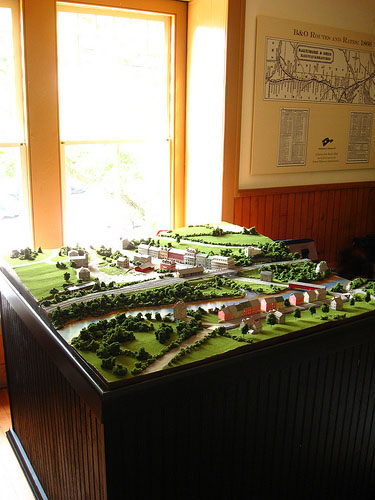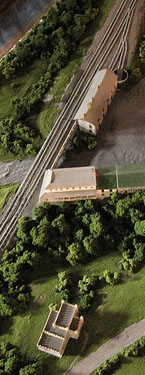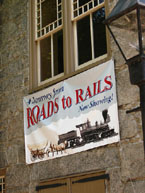|
|
|
|
|
Model of Ellicott's Mills, Maryland
'Roads to Rails' Exhibit, B&O Museum
Ellicott City, Maryland
Model Initially Created for 1972 Bicentennial Celebration
Refurbished in 2009 for inclusion in 'Roads to Rails.'
This little model was built to show the extent to which Ellicott's Mills had developed by the middle of the Nineteenth century! It was founded in 1772 by John, Joseph and Andrew Ellicott, who convinced Charles Carroll [the one who signed the Declaration of Independence] to move away from single crop agriculture on his estate of Carrollton. Tobacco was the big cash crop and that was all Carroll grew in the beginning.
The brothers built a flour mill and promoted a more diverse agriculture. That kept the region from experiencing the soil depletion that occured in many plantation areas. Carroll planted wheat and other crops and the Ellicotts milled the wheat. They also partnered with Charles Carroll to build a turnpike which was later incorporated into the great National Road
The Ellicotts operated a sawmill and another mill for crushing limestone. This was usd to enrich the fields. They also operated an iron rolling mill. Joseph Scott's "Geographical Description of the States of Maryland and Delaware," published in 1807, tells of the economic diversity Ellicott's Mills had achieved at this early date. "Several kinds of mechanical trades are carried on here; such as coopers, blacksmiths, tanners, shoemakers, saddlers."
In 1830 the town became the first terminus of the Baltimore and Ohio Railroad. The first rail cars were horse-drawn and a sail-powered car was even tried on the new iron road. Steam was to prevail as the motive power of choice and the legendary race between the steam engine Tom Thumb and a horse-drawn car was run at Relay, a point on the tracks between Ellicott's Mills and Baltimore.
The 1972 Model
Reconstructing Ellicott's Mills
Basswood Models | Renderings |
|


